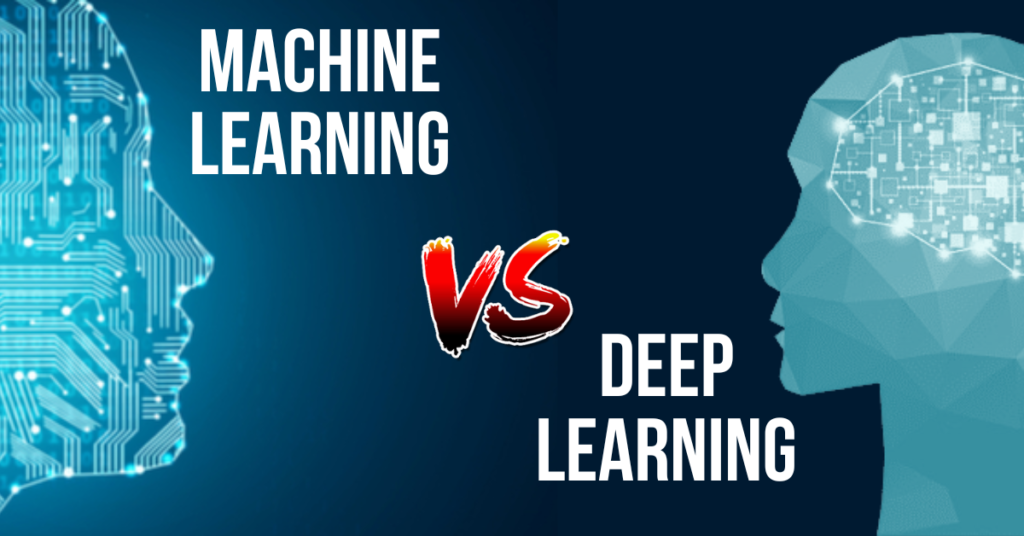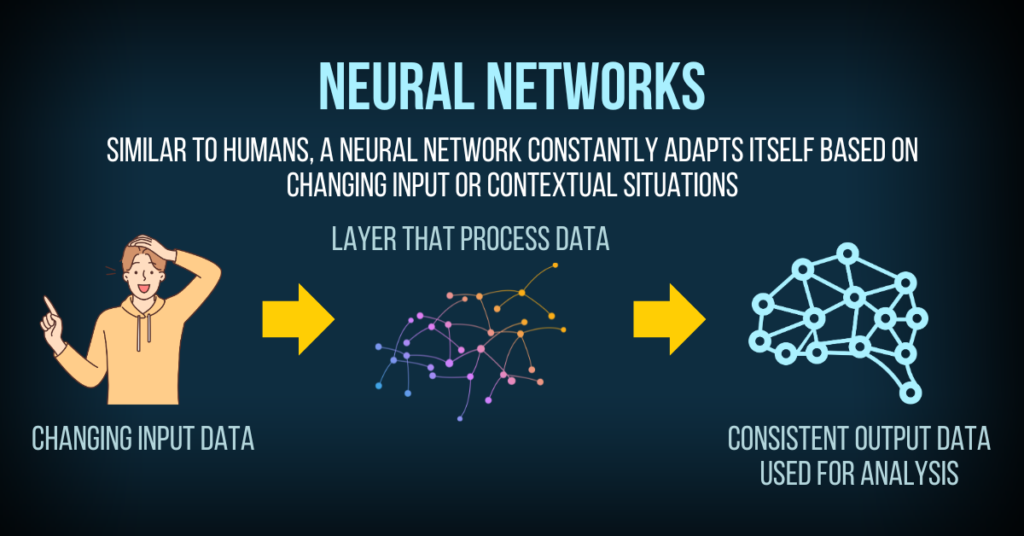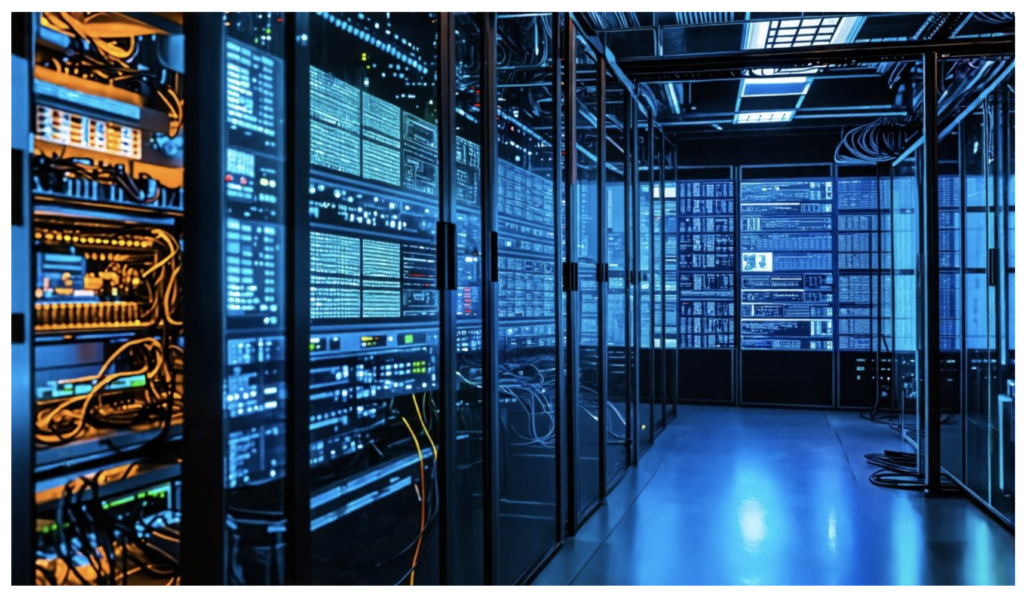Confused about the buzz around machine learning vs deep learning?
You’re not alone. This blog breaks down the key differences between these two powerful branches of artificial intelligence, making it easy to understand how they impact our world.
Keep reading for a clearer picture on the differences between deep learning vs machine learning!
Table of Contents
Key Takeaways
- Machine learning vs deep learning are parts of artificial intelligence that help computers learn from data, but they do it differently. Machine learning uses algorithms like decision trees to make predictions with some human help, while deep learning understands complex patterns on its own using neural networks.
- Deep learning requires a lot more data and computer power than machine learning. It’s great for tasks like recognizing images or speech because it can process loads of information and find patterns humans might miss.
- Both technologies need big data to learn well. The more examples they have, the better they get at making accurate predictions. This is super important for things like spotting fraud or recommending what movie you should watch next.
- Machine Learning is used in various jobs such as detecting fake emails or sorting real news from fake news. On the other hand, Deep Learning powers advanced stuff like self-driving cars and smart voice assistants that can chat with you.
- Businesses use machine learning and deep learning in different ways based on what problem they’re trying to solve. While machine learning might be enough for simple tasks, deep learning shines when dealing with complex issues that need a deeper understanding of large amounts of data.
Understanding Machine Learning vs Deep Learning
Machine Learning and Deep Learning are two powerful tools in artificial intelligence. They both involve using algorithms to enable machines to learn from data and make predictions.
What is machine learning vs deep learning?
Machine learning and deep learning are parts of artificial intelligence that help computers learn from data. Think of machine learning as a smart assistant that gets better at its job by learning from past mistakes with a little bit of guidance.
It uses algorithms, like decision trees and linear models, to predict answers without being directly programmed for each task. This means it can adapt and improve over time with minimal human help.
Deep learning takes this idea further by using neural networks with many layers. These are much more complex systems that require lots of data and power but can understand and learn from patterns in the data on their own.
Imagine teaching your computer to recognize cats in photos; deep learning allows it to figure out what makes a cat all by itself after looking at enough pictures.
Now let’s explore how they’re similar yet so different.
Similarities between machine learning vs deep learning
You’ll find several similarities between machine learning and deep learning:
- Both are subsets of artificial intelligence, driving automation and adaptation in various applications.
- They involve ongoing learning processes, constantly evolving to improve performance based on error analysis.
- Both use data processing to adapt and learn from large datasets, aiding in predictive modeling.
- Human intervention is minimal in the ongoing evolution of both techniques, emphasizing automation and adaptation.
- They underpin advancements in cognitive computing, leading to pattern recognition and natural language processing capabilities.
Now let’s delve into the distinctions between machine learning vs deep learning!

AI Techniques Used
Machine learning uses techniques like regression analysis, decision trees, and linear models to train its algorithms. On the other hand, deep learning employs more complex methods such as neural networks, convolutional neural networks (CNN), and recurrent neural networks (RNN) with many layers for data learning.
These advanced AI techniques enable machines to analyze and learn from large datasets in a way that simulates human-like understanding with Conversational AI.
Understanding these key differences between machine learning and deep learning can provide you with insight into how artificial intelligence is shaping the world around us.
Statistical Basis
Both machine learning and deep learning use statistical methods to train their algorithms with datasets. Machine learning techniques include regression analysis, decision trees, and linear models.
On the other hand, deep learning techniques involve neural networks, convolutional neural networks, and recurrent neural networks. Both types of artificial intelligence rely heavily on statistical analysis to learn from data and make predictions.
Relationship to Big Data
Machine learning and deep learning are closely related to big data. In fact, the growing volume of data is essential for training these AI techniques effectively. The more extensive datasets provide valuable information for algorithms to learn patterns and make accurate predictions.
For instance, in supervised learning, large amounts of labeled data help machines recognize patterns and make decisions accurately. Similarly, unsupervised learning benefits from vast unstructured data to find hidden patterns or structures within it.
Moreover, with ongoing developments in big data technologies, businesses can efficiently store and process massive datasets required for machine learning and deep learning applications.
This integration between big data and AI has revolutionized industries such as healthcare, finance, and marketing by enabling them to extract meaningful insights from the ever-increasing volumes of data.
Therefore, understanding how machine learning and deep learning connect with big data is crucial for leveraging their full potential in various industries.

Differences between Machine Learning and Deep Learning
Machine Learning and Deep Learning have distinct intended use cases and approaches to problem-solving. The training methods, human involvement, and infrastructure requirements also set them apart.
Intended Use Cases
Both machine learning and deep learning find application in various fields. Machine learning, which requires less data and computational power, is commonly used for tasks like fraud detection, recommendation systems, and spam filtering.
On the other hand, deep learning’s ability to process complex data makes it suitable for applications such as image and speech recognition, natural language processing (NLP), and autonomous vehicles.
Understanding these distinctions will help businesses choose the right approach for their specific needs.
The intended use cases of machine learning and deep learning are diverse. Machine learning algorithms are often utilized in customer service chatbots to provide personalized responses based on user interactions while deep learning is employed in advanced facial recognition systems that can accurately identify individuals from images or videos with high precision.
Approach to Problem-Solving
When it comes to problem-solving, machine learning typically approaches tasks by relying on feature engineering and human domain knowledge. It involves identifying relevant features in the data to create models that can make predictions or classifications.
Deep learning, on the other hand, takes a different approach by automatically extracting features from the raw data through its layered neural networks. This means that deep learning algorithms are designed to learn intricate patterns and representations from the given input directly.
Deep learning necessitates more computational power and data because of its complex network structure with multiple layers needing careful optimization during training sessions.

Training Methods
Now let’s shift our focus to the training methods used in machine learning and deep learning. In machine learning, the algorithms are trained using a variety of techniques such as regression analysis, decision trees, and linear models.
On the other hand, deep learning involves training algorithms through neural networks like convolutional neural networks and recurrent neural networks. The main distinction lies in the complexity and depth of these methods – where machine learning employs traditional statistical processes while deep learning relies on multi-layered neural networks.
These methods are significant because they determine how AI systems learn from data to make decisions or predictions, impacting industries like customer service and business transformation.
Understanding their differences will help you comprehend which method is best suited for various applications within data science.
Human Involvement
Moving from understanding training methods to human involvement, it’s crucial to note that deep learning algorithms require significant human involvement for the initial setup and ongoing maintenance.
This includes data preprocessing, feature engineering, hyperparameter tuning, and model evaluation. On the other hand, machine learning may need less direct human involvement due to its simpler architecture; however, feature selection, algorithm choice, and dataset curation still demand human input at various stages.
Understanding these differences is vital in choosing the right approach for specific tasks or applications. It’s advisable for businesses seeking more than just practical outcomes to consider how much human expertise and effort they’re willing to invest when deciding between machine learning and deep learning techniques.
The necessity of human involvement in setting up and maintaining deep learning algorithms contrasts with the relatively lesser demand for direct intervention in traditional machine learning methods.
Choosing between these two approaches requires an understanding of how much effort you’re prepared to put into your AI systems as a business or individual practitioner.

Infrastructure Requirements
Now, let’s talk about the infrastructure requirements for deep learning. Deep learning demands more computational power and data compared to traditional machine learning methods. For instance, deep learning models often require high-performance GPUs or specialized hardware to handle the complex calculations involved in training neural networks with many layers.
Additionally, due to the large volumes of data needed for effective deep learning models, businesses implementing this technology must ensure they have robust data storage and processing capabilities in place.
This increased demand for computational resources means that setting up a suitable infrastructure can be more expensive than for traditional machine learning. In some cases, cloud-based solutions may offer a cost-effective way to access the necessary computing power and storage capacity required for deep learning applications without having to invest heavily in on-premises infrastructure.
Understanding these differences is crucial as it allows businesses to make informed decisions when planning their AI strategy and selecting the right tools based on their specific needs.
Impact on Industries and Applications
Machine Learning and Deep Learning have a significant impact on various industries, transforming customer service, business operations, and overall industry landscapes. The types of deep learning algorithms used in these applications play a critical role in shaping the future of technology.
Customer Service
When it comes to customer service, deep learning can revolutionize the industry by enabling chatbots and virtual assistants to understand and respond to customer queries more efficiently.
These systems use neural networks to comprehend natural language and provide personalized solutions based on vast amounts of data. This enhances user experience, reduces wait times, and improves overall satisfaction.
Implementing deep learning in customer service can lead to a significant enhancement in the quality of support provided.
Moving forward, let’s explore how businesses are being transformed through the application of machine learning and deep learning techniques.

Business Transformation
Now, moving on to business transformation. Understanding the use of machine learning and deep learning is crucial for businesses. By implementing these AI techniques, companies can revolutionize their operations and decision-making processes.
Businesses across various industries have already reaped the benefits of incorporating deep learning into their processes. Take, for example, how a retail company used deep learning algorithms to analyze customer behaviors and preferences from large datasets.
This led to more personalized marketing strategies and recommendations, resulting in increased sales and customer satisfaction.
In another instance, a healthcare organization utilized deep learning for medical image analysis. The implementation improved diagnostic accuracy and speed in identifying critical conditions such as tumors or anomalies within medical scans by an impressive 25%.
These examples demonstrate that integrating advanced AI techniques like deep learning can significantly impact industries positively while setting them apart from competitors.

Examples of Deep Learning
Deep learning is used in various industries and applications, showcasing its versatility and power. Here are some examples to help you understand the practical applications of deep learning:
- Medical Diagnostics: Deep learning is used to analyze medical images like X-rays and MRI scans for accurate diagnosis and treatment recommendations.
- Natural Language Processing: Virtual assistants like Siri and Alexa utilize deep learning to understand and respond to human language.
- Autonomous Vehicles: Deep learning algorithms enable self-driving cars to navigate and make decisions based on real-time data from cameras and sensors.
- Facial Recognition: Deep learning powers facial recognition technology used in security systems, social media tagging, and authentication processes.
- Financial Forecasting: Deep learning models are employed for predicting stock prices, identifying fraudulent transactions, and analyzing market trends.
- Robotics: Complex tasks in robotics are accomplished using deep learning, such as object recognition, grasping objects, and motion planning.
- Recommendation Systems: Platforms like Netflix use deep learning to recommend personalized content based on user preferences and viewing history.
- Speech Recognition: Deep learning algorithms accurately transcribe speech into text in applications like voice-to-text software and automated customer service systems.
Understanding these real-world instances can demonstrate the significance of deep learning in shaping modern technologies.
Types of Deep Learning Algorithms
Deep learning algorithms are diverse and powerful, each designed to solve specific problems. Here are some types of deep learning algorithms:
- Convolutional Neural Networks (CNNs): Used for image recognition and processing, CNNs are capable of identifying patterns within visual data.
- Recurrent Neural Networks (RNNs): Ideal for sequential data like time series or natural language processing, RNNs can analyze patterns in sequences.
- Generative Adversarial Networks (GANs): GANs create new data instances that resemble a training set, useful in creating art or generating synthetic data.
- Long Short-Term Memory (LSTM): A type of RNN with memory, enabling it to learn from sequences with long-range dependencies such as speech recognition.
- Deep Belief Networks (DBNs): Comprised of multiple layers of latent variables, DBNs are used for feature learning and can be trained unsupervised.

Conclusion
Now you comprehend the differences between machine learning vs deep learning. Deep learning is more complex than machine learning, requiring more computational power and data. Understanding these differences is crucial for businesses to select the right AI tools for their needs.
Both have a significant impact on various industries and applications, from customer service to business transformation. Their statistical basis and intended use cases set them apart in the realm of artificial intelligence.
FAQs
1. What are the main differences between machine learning and deep learning?
Machine learning and deep learning differ in many ways, including their algorithms, data usage, computational complexity, and problem-solving approach.
2. How does machine learning work compared to deep learning?
Machine learning works by using algorithms that improve over time with experience. On the other hand, deep learning uses artificial neural networks with several layers for complex problem-solving.
3. Can you give an example of when to use machine learning versus deep learning?
You would use machine learning when your dataset is small or medium-sized and you need a solution quickly. Deep Learning is best used when dealing with large datasets where high accuracy is required.
4. Is one better than the other – Machine Learning vs Deep Learning?
Neither is inherently better than the other; it depends on your needs. If you have ample data and computing power and require high precision, then go for deep-learning; otherwise stick to machine-learning.





